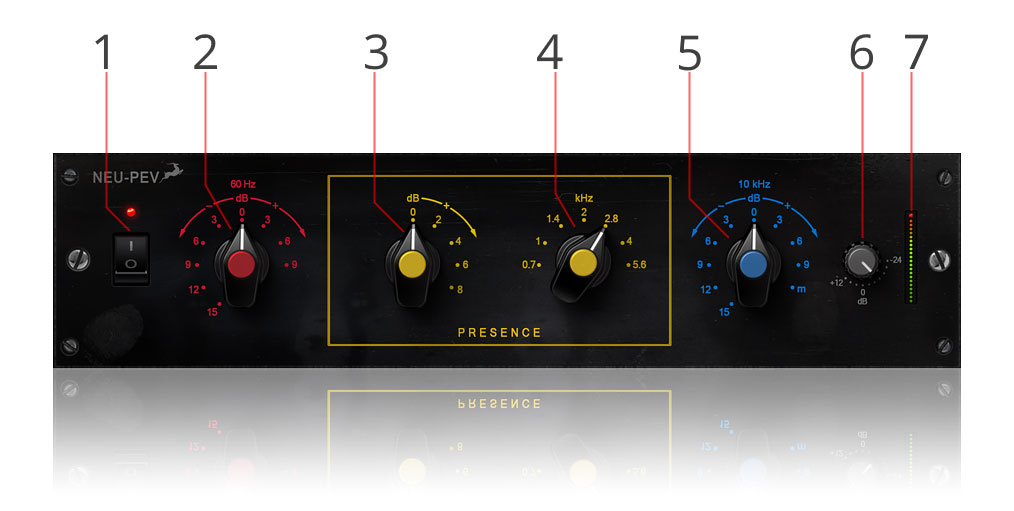1. Introduction
The NEU-PEV EQ is modeled on a rare German passive equalizer designed in the 60s. Its simple interface belies the complex tonal possibilities achievable with its four main knobs. A low shelving filter is fixed at 60Hz and can apply a boost or cut.
The “Presence” section offers up to 8 dB of boost for one of 7 selectable frequencies between 700 Hz and 5.6 kHz, while a 10kHz high shelf allows boost or cut at the top end of the frequency spectrum. An on-off switch and output gain control provide users with even more utility.
Notable for its warmth and spacious midrange, the NEU-PEV makes some of the most compelling sounds of both yesterday and today achievable without a massive rack of aging vintage gear!

